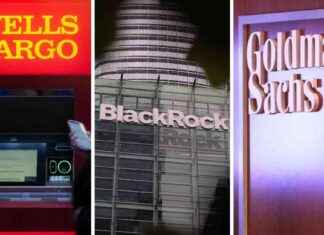MADRID, 31 Ago. (EUROPA PRESS) –
The 12-month Euribor, an index used as a reference in most variable-rate mortgage loans in Spain, registered its first fall in 20 months this August, since January 2022, although it has remained above the 4%, according to data compiled by Europa Press.
In the absence of confirmation from the Bank of Spain, the index stood at 4.073% in August, a figure lower than the 4.149% registered in July, which was its highest level since 2008. However, the Euribor remains high in comparison with August 2022, when the index reached 1,249%.
This level of Euribor implies that a person who has contracted a variable mortgage of 150,000 euros over 30 years and with a differential of 0.99% plus Euribor and must review their interest rate in the month of August, register an increase in their quota mortgage of about 238 euros per month, compared to the rise of 265 euros registered in July.
In this way, your mortgage payment would go from about 572 euros to about 810 euros per month in August.
The mortgage director of the iAhorro comparator, Simone Colombelli, is cautious, as he recalls that August is, historically, a month of declines because everything is paralyzed. “Most likely, we will see more Euribor rises again from September. I would not say that what we are seeing is a downward trend as such, but rather a small seasonality in the data,” says the expert.
In this way, the comparator indicates that in August the Euribor tends to fall or register minimal increases or decreases that are not “significant” for the market. Thus, Colombelli recalls that during the past year 2022, in August the index stood at 1.249%, only two tenths and a half above the data for July (0.992%), “which may seem like a good rise, but when compared With such a drastic increase registered in September, of almost one percentage point, up to 2,233%, it could be said that it was minimal”.
Likewise, iAhorro points to the fact that interest rates have exceeded the Euribor in the last two months, something that has not happened since the indicator was positioned in negative and rates at 0%. Colombelli explains that this is because the increase agreed by the European Central Bank (ECB) in July was only 0.25 percentage points. “When we enter an environment of smaller increases, the push to the Euribor is less,” he says.
In addition, he points out that if a new rise occurs in September, it does not mean that something similar will occur every month: “At the end of 2023 and the beginning of 2024 we will not see continuous rate increases, but rather, from time to time, In order to lower inflation (which in some EU countries is more controlled and in others less), the ECB will decide to increase them, maintain them, and maybe even decrease them,” he says.
Regarding a possible rate hike in September, Colombelli believes that it will not exceed 25 basis points. However, the comparator does not foresee “major changes” in the last quarter of 2023, in such a way that the Euribor will continue “more or less” as before, with slight rises and falls. For 2024, iAhorro also foresees a difficult year, although a transition towards a decline at the end of next year and the beginning of 2025.
For his part, the HelpMyCash mortgage specialist, Miquel Riera, explains that the slight drop in August reflects that entities are applying lower interest rates on their interbank loans because they anticipate that the ECB will stop increasing its rates in the medium term.
“That is to say, that they adapt their prices to the pause that they expect to take place within the next 12 months,” he adds.
This comparator also sees it likely that the ECB will apply a new rate hike in September or October in order to contain inflation, so the Euribor could continue trading slightly upwards in the coming months and will stabilize around 4%. and 4.5% before the end of the year; below, however, the interest rate applied by the ECB.
However, from the comparator they do not rule out that the ECB may now pause the rate hikes, as predicted by various players in the financial market. However, for that to happen, HelpMyCash believes that two conditions should be met: that inflation in the euro area falls at a faster rate than expected in August or September and that the continent’s economy is on the verge of recession in the third quarter. .
The economist and professor at the European University of Valencia, Leticia Poole, explains that the reasons behind the drop in August lie, on the one hand, in the supply of credit, since the amount of credit granted by banks in the second quarter has fallen 14% compared to the first three months of the year. “This smaller amount of money borrowed means that in this quarter the money can be lent at a cheaper rate,” she says.
Another reason is the expectations of economic evolution, since Germany is “practically stopped”, while Europe, although it is not in recession, is stagnant, in such a way that the market expects the ECB not to raise rates or, if it does, , they will be restrained.
Finally, he indicated that August is traditionally a month “without news or shocks.”







